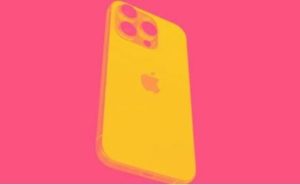
In the span of 17 years, the iPhone has transcended its status as a mere phone, transforming into a cultural icon that has left an indelible mark on societies worldwide.
From the first generation in 2007 to the iPhones of today, Apple’s flagship phone has not only revolutionised the way we communicate but has also permeated into various aspects of our lives, shaping culture in unprecedented ways.
At its core, the iPhone has revolutionised communication. With that iconic event in 2007 histed by Steve Jobs, the world left behind the days of physical keyboards and limited messaging capabilities. Jobs introduced the work to a “smart” phone with a sleek touchscreen interface, intuitive design. The essence of the iPhone was to make communication more personal, more immediate. Which was taken to the next level with the advent of iMessage and FaceTime that further blurred the lines between written and spoken communication, allowing users to connect seamlessly across distances.
The cultural impact on apps
Central to the iPhone’s cultural impact is the App Store, a digital marketplace that altered the way we engage with software. The App Store democratised app development, enabling developers and small companies to create and distribute applications globally. As per an Analysis Group report on Apple newsroom, users today have access to over 123 times more apps than they did at the end of 2008, and annual downloads on the App Store increased 15-fold between 2009 and 2022. As per a report released in January 2024, in 2023, Android users had access to 3.718 million applications on Google Play — Apple’s competitor app store — in 2023. The Apple Apple Store had 1.803 million iPhone apps available in the same year. This boom has not only spurred innovation but also gave birth to the app economy, an ecosystem that changed the face of the tech industry.
Meanwhile, iPhone also brought a shift to how the world viewed photography. From being a hobby that required dedicated equipment, the iPhone brough photography into people’s daily lives. The iPhone’s camera capabilities, with each iteration becoming more advanced, turned users into content creators, sharing their lives visually with the world. Cut to the rise of social media. With iPhones, and its contemporaries, bringing deeper focus to the camera, platforms like Facebook, Instagram, and later TikTok became integral parts of people’s lives, fostering new forms of self-expression and communication.
A cultural artifact in our pockets
Beyond its functionality, the iPhone has also always been a status symbol. At least since I can remember. I got my first iPhone in 2010, and I remember amused eyes and a few eye rolls at the news. Even now, as the iPhone has turned 17, the Apple device may have become more accessible thanks to bank offers, and easy EMI plans, it continues to be a status symbol. It’s still a cultural artifact that reflects individual identity and societal trends. Owning the latest iPhone is not just about having the latest technology; it’s a statement, a nod to being part of a global community connected through a shared technological experience.
Each iPhone release marks a moment in time, a technological snapshot that captures the zeitgeist of its era. The iPhone has somewhat become a rite of passage, marking significant milestones in the lives of individuals, symbolising personal progress and identity.
As the iPhone continues to evolve, its cultural impact shows no signs of waning. We are already seeing the latest iPhones — the iPhone 15 series — working in sync with the company’s Vision Pro headsets to create 360-degree AR/VR content. For the future iPhones, Apple is strongly rumoured to be integrating generative AI tools within the iPhones and into its voice assistant Siri. The iPhone 16 Pro models are also rumoured to come with a dual 48 MP wide angle camera, which would be a dramatic improvement from the current 12 MP wide angle camera on the iPhone 15 series.
Basically, the iPhone will continue to be loved and hated. However, it can not be argued that the iPhone is a cultural touchstone that has woven itself into the fabric of the tech world. Its impact extends beyond technology, influencing the way we communicate and perceive the world. It may not always lead technology now, but tech leaders still turn to it for quality, security, and a cultural status symbol.




 Uber Cup badminton: India’s young women’s squad beats Canada 4-1
Uber Cup badminton: India’s young women’s squad beats Canada 4-1




























